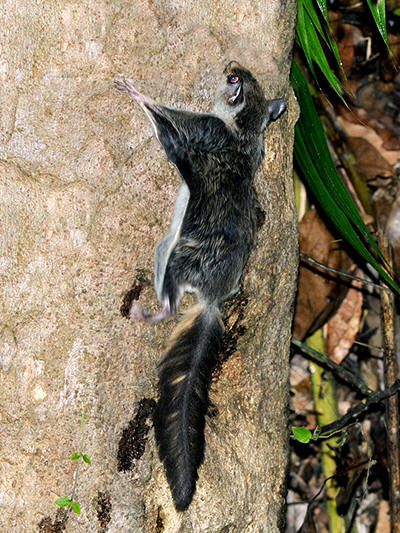
Fig 1
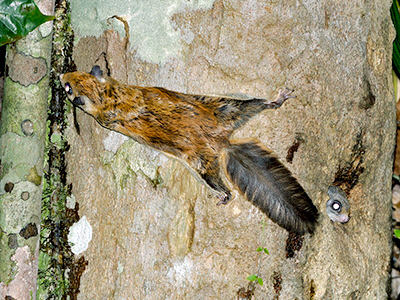
Fig 2
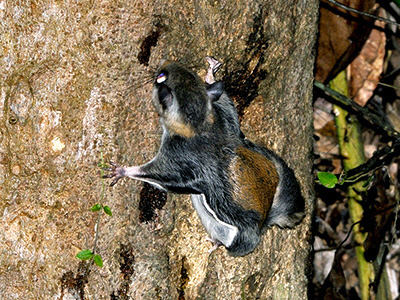
Fig 3
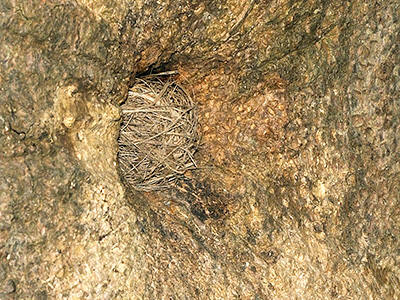
Fig 4
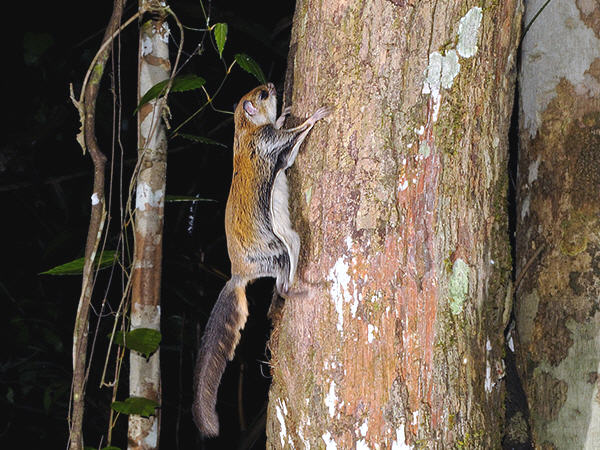
Fig 5
|
Order : RODENTIA
Family : Sciuridae
Species : Hylopetes spadiceus
Head-Body Length : Up to
18 cm
Tail Length : Up to 16 cm
Weight : Up to 157 grams
The attractive Red-cheeked
Flying Squirrel inhabits a variety of forest types, but is more commonly
found in tall, lowland primary rainforest.
Their nesting holes are generally located towards the base of medium-sized
trees : the squirrels appear to excavate their own nesting holes or inhabit
holes made by other species, rather than inhabit natural tree holes.
Reportedly, they have also been found nesting inside coconuts.
By day the entrance to the nesting hole is plugged with dry grass or other
vegetation : this is removed at dusk when the squirrels emerge and quietly
ascend to the canopy before feeding.
Their dorsal fur colour
varies from dark grey or grey-brown to orange-red, and the gliding membrane
is edged with white fur. The feather-like tail is dark grey to dark
brown, the base of which is buff to orange. A small patch of reddish-brown
fur occurs on the cheeks.
The species is wide-ranging, occurring in Myanmar, Thailand, Cambodia, Vietnam, Peninsular Malaysia, Singapore, Sumatra, Java and Borneo.
Figs 1 to 3 :
These three squirrels were photographed leaving the same nesting hole at
dusk. The third squirrel (Fig 3) still has its tail inside the tree
hole. Note the variation in fur colour and patterning between the
three squirrels, the lowermost of which appears to be a juvenile. Seen
on Langkawi Island, northern Peninsular Malaysia.
Fig 4 : Typical nesting hole plugged
with
dead grass.
Fig 5 : Example from a nesting hole in a dying tree in freshwater swamp
forest, Singapore.
References :
Francis, C.M., 2001. Mammals of South-east Asia. New Holland.
Lekagul, B., McNeely, J., 1977. Mammals of Thailand. Association for the
Conservation of Wildlife, Thailand. 758 pp.
Payne, J., Francis, C.M., 1998. A Field Guide to the Mammals of
Borneo. The Sabah Society.
|